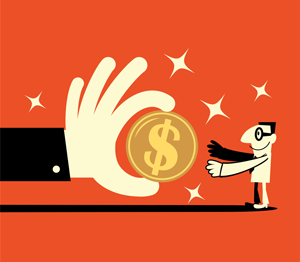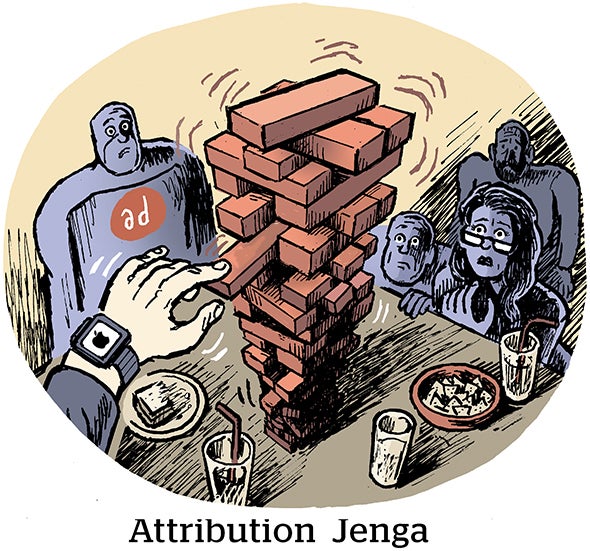For years, marketers have leveraged a wide range of incentives such as coupons, rebates, sweepstakes and loyalty programs to motivate consumer behavior.
 A recently released research study, “Incentivized Engagement Report: How Brands Can Leverage Incentives to Motivate Behavior Across the Customer Journey,” examines the role incentives play in relationship building and engagement efforts across various forms of marketing. The report reaffirmed that incentives are an extremely effective marketing strategy, with 81 percent of consumers saying they are more likely to engage with a brand that offers incentives. The report also reveals some surprising insight that debunks commonly held beliefs regarding incentive-based marketing.
A recently released research study, “Incentivized Engagement Report: How Brands Can Leverage Incentives to Motivate Behavior Across the Customer Journey,” examines the role incentives play in relationship building and engagement efforts across various forms of marketing. The report reaffirmed that incentives are an extremely effective marketing strategy, with 81 percent of consumers saying they are more likely to engage with a brand that offers incentives. The report also reveals some surprising insight that debunks commonly held beliefs regarding incentive-based marketing.
Myth 1: Millennials are the Hardest Group to Motivate with Incentives
Millennials – often stereotyped as entitled and skeptical consumers – may seem like the wrong audience for incentive-driven marketing. However, millennials lead the way in incentive-inclined behavior. Eighty-six percent of millennials (consumers aged 24-38) say they are more likely to interact with a brand that offers incentives, followed by 84 percent of consumers aged 39- 53, 79 percent of consumers aged 65 and up, 77 percent of consumers aged 54-65 and 76 percent of consumers aged 18-23.
Key Takeaway: As a tech-savvy generation that places greater value on experiences and authenticity, millennials are often more savvy with how they spend their time and money. For this group, it’s not just the incentive but the entire program strategy, positioning and experience that will determine success or failure.
Myth 2: Coupons and Rebates are the Best Incentives to Drive First-Time Purchases
While coupons and rebates had the highest response rates, they’re not the only incentive that drives purchase, and may not be the best use of your marketing budget. Eighty-eight percent of incentive inclined consumers have made a first-time purchase from a brand because of a discount or coupon, and 66 percent have because of a product rebate. However, one of the most surprising findings was that 45 percent of consumers made a first time-purchase from a brand because of a sweepstakes or contest. While coupons and rebates are the most effective incentives at motivating first-time purchase, they’re not necessarily the most cost-efficient. These incentives come with a real price tag, multiplied per participant. Everyone receives their 20 percent off or cash-back rebate on a purchase. On the other hand, a sweepstakes or contest only requires the brand to pay out the hard-dollar incentive to a small subset of participants, and these types of incentive programs don’t erode brand value by discounting price.
Key Takeaway: It is important to understand the full range of incentives that can be used to drive purchase, so you can surgically employ them based on marketing objective, budget and operational considerations.
You May Also Enjoy:
- Three Ways to Ignite Brand Affinity to Build Loyalty
- Understanding Why Micro-Segmentation is Critical to Digital Experiences
Myth 3: Higher Income Consumers Aren’t Interested in Sweepstakes
Outside of loyalty programs, high-end brands have been reluctant to offer incentives, ostensibly concerned that their brand image will be diminished, and that they will lose appeal among core buyers. Yet statistically, higher income consumers participate in sweepstakes and contests at a higher rate than consumers with lower incomes. In fact, 78 percent of consumers with incomes of $80,000-$120,000 and 70 percent of consumers with incomes over $120,000 have entered a branded sweepstakes or contest, compared to 47 percent of consumers with incomes less than $20,000, and 67 percent with incomes between $20,000-$80,000.
Key Takeaway: Sweepstakes and contests that include elements of aspiration and special access not only motivate higher income consumers, they can also enhance a brand’s premium positioning.
Myth 4: Loyalty Programs Are Best Used to Motivate Purchase
While purchase may be the most important action marketers want members to take, it’s not the only behavior loyalty programs motivate. When survey participants were asked if their favorite brand offered a loyalty program, what actions would they take, 40 percent of consumers responded ‘I’d buy from the brand more often than I otherwise would’ and 40 percent said ‘I’d buy something from the brand sooner than I otherwise would’… but the top action respondents said they’d be willing to take was sharing personal information with the brand (72 percent). Other behaviors loyalty programs motivate are ‘recommend the brand to friends or family’ (39 percent), ‘sharing the program with friends and family’ (38 percent of respondents) and ‘writing a review for the brand’ (24 percent).
Key Takeaway: Building loyalty strategies for the purpose of fostering holistic relationships, rather than just purchase, will allow you and your consumers to get more mutual value out of the program.
The marketing landscape has never been more competitive, and incentivized engagement provides brands with a strategic advantage for motivating specific consumer actions. Don’t let these and other common marketing myths limit your brand’s incentive strategies. The reality is, incentives grab consumers’ attention and drive behavior— it’s experience that surrounds the incentive that allows brands to reinforce their unique positioning.
Matt Kates is CMO at Prizelogic. He can be reached at mkates@prizelogic.com.




